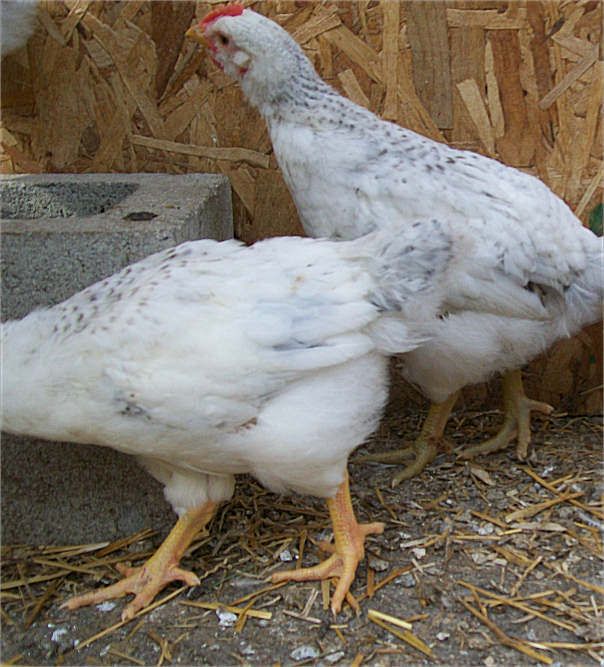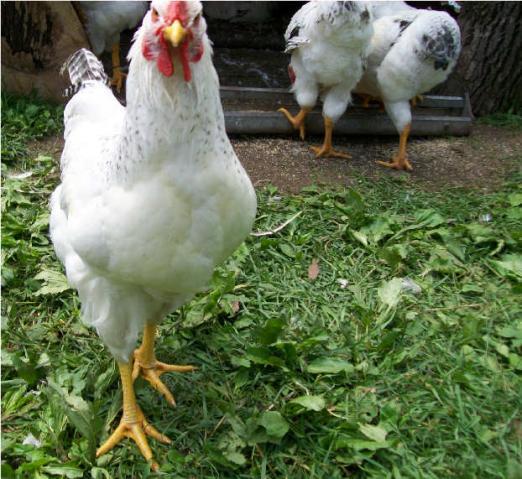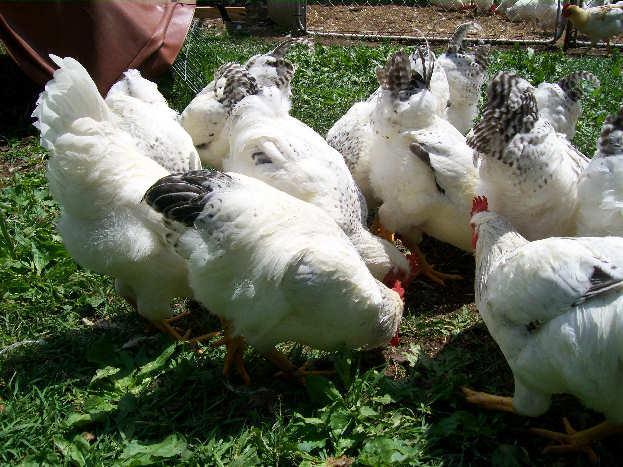OK I figured with the discussion Walt and I had on shank color, I'm going to show some of what I'm referring to. Now I DO NOT have these all nailed down, and none of these birds are fully correct yet. My next test generation out of some of these should tell me much more on shank color expression. These are males only. Also note this is not a comprehensive list of everything I believe to be going on to express differences.
Also note.. all of these roos have the same Sire. Exception being the non barred roo. and many from the same hens.
This is what I suspect id+/id+ vs ID/ID or ID/id+ look like as chicks. I would have been able to tell for sure had I realized then that there were going to be as many differences as what I've found. So next generation hatch, I'll be making much more detailed notes and tracking of each bird.
From left to right you have
1> id+/id+ with light barring
2> ID/id+ with light barring
3> ID/ID with light barring
4> ID/id+ with dark barring
5> ID/ID with dark barring
Now I know in this photo it's most likely hard to see all the differences, but in the high quality photo you can. I may set up a way in the future to post links to those as well.
Also I want to say, that those aren't the only differences I've noted, I'm only pointing out the "common" ones.
Now this is a comparison of ID/ID no barring vs id+/id+ with barring. Which really shows contrast difference. I should mention the non barred roo shanks have always been yellow, from hatch to now. Where as the Dels shanks were green from hatch as shown in the chick photo.
Now this show the non barred ID/ID roo next to a dark barred ID/ID DEL and the right 2 is are ID/id+ with dark and light barred DELs. Hard to tell in the photo, but seeing them live, it's fairly apparent.
This one is ID/id+ light barred. As a chick he would have been what most are referring to pale yellow of tinged green. In the back at the feeder are one light barred ID/ID and a dark barred ID/ID.
For the rest of the photo's I'll let you decide what you think the differences are. What I want to show contrast in apparent effects on plumage, though I'm not fully focused on segregating for that yet.












